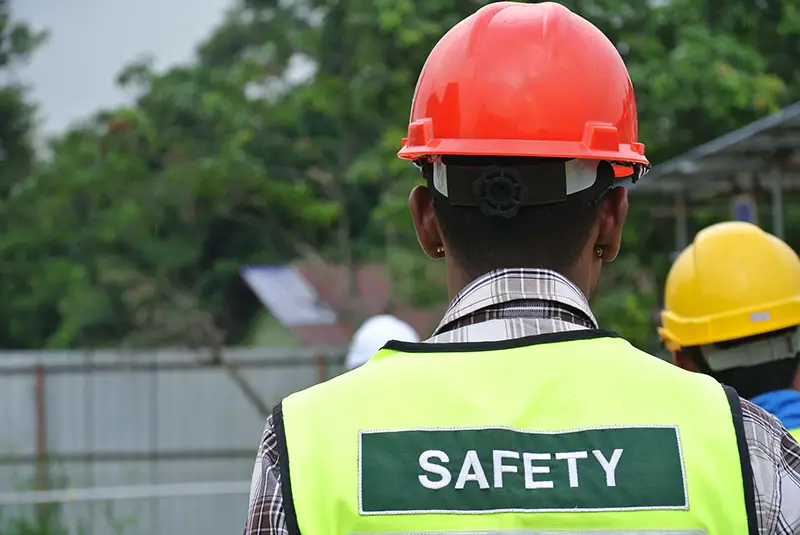Click here to get this post in PDF
One of the keys to a successful safety management program in any company is safety training. Without educating and training our staff about the safety policies and best practices, we simply won’t be able to improve health and safety in the workplace.
However, the thing with any training is that it won’t bring too much value if you aren’t keeping track of it, and it’s just the same with safety training. Proper safety training tracking will help safety managers and supervisors in monitoring what training modules each employee has completed, and how many hours they’ve invested in safety training.
An essential aspect of safety training is to refresh workers with updated safety classes to reflect on new hazards and changes in the workplace. Safety training tracking can precisely help ensure refresher courses are received on time.
Why Safety Training Tracking Is Essential
In many industries and locations, keeping accurate safety training records is a legal requirement. Thus, maintaining a good safety training tracking practice is often mandatory.
With that being said, here are some important benefits of tracking worker safety training:
- Improving Workplace Safety
This one is pretty self-explanatory. By ensuring employees receive white card training, we can improve the overall quality of each work activity, reducing risks of incidents and workplace-related injuries/illnesses.
- Ensuring Compliance
Chances are, your company is required to stay compliant with local health and safety regulations, like OSHA in the US. Keeping organized records that track completed safety training can ensure this and limit your company’s liability when accidents happen. In addition, keeping proper documents can help you demonstrate that your company is doing everything you can to stay compliant and committed to keeping your workplace safe. For example, it ensures the staff know how to use a folding ladder correctly or store hazardous materials safely.
- Onboarding
Safety training is typically an integral aspect of onboarding new employees and a good safety training software solution can ensure your new employees are well-equipped for success without risking their safety. With a comprehensive safety training tracking solution, you can develop standardized training modules and classes to track new employees’ progress and keep them on track.
- Automated Notifications
To keep your employees up to date on new safety procedures, hazards, equipment, and skills, refresher courses should be regularly given. Also, some certifications and legal requirements may also require repeated/renewed courses. A safety training tracking software solution can help you organize your training program to recognize who is up for the refresher and renewal classes, ensuring both your business and your workers always stay in compliance.
- More Objective Promotions
With a proper tracking system in place, managers and supervisors can more objectively track which employees perform well during their training classes. At the same time, you can continue to offer more educational opportunities for their development. For instance, the safety tracking software can allow supervisors to set goals for their team and track the performance of each employee in accomplishing these goals. In turn, this can help businesses in giving birth to new leaders within the organization.
- Improved Morale and Motivation
Good safety training classes can help workers feel like they are progressing and learning new things, while at the same time, they can feel confident that their workplace does care about their health and safety. This makes workers feel valued, and in turn, they’ll have more trust in the business and will be more loyal. Employees can also use the safety training tracking software to track their own progress, as well as their peers’. When they achieve new milestones and receive new notifications from the tracking software, they’ll receive a new boost in morale.
What Are The Most Important Metrics In Safety Training Tracking?
Now, we’ve understood the importance and benefits of safety training tracking, what metrics should we track? How should we properly track safety training progress?
Here are some crucial metrics to track in your worker’s training records:
Completion
This one is pretty self-explanatory. Track which modules and classes have been completed by the employee. This can help us track which class they should take next and whether the specific employees have passed certain requirements (i.e. eligible for promotion). With a safety training tracking solution, we can easily set up alerts for completion or we can publish training certificates in the employee’s training app.
Test Scores
Completing a training module is one thing, but that doesn’t necessarily guarantee that the worker has acquired the knowledge or skill provided by the training module. We should incorporate tests and safety assessments into the training modules to monitor each worker’s improvements. Again, a software solution can provide the benefit of automated grading for these tests.
Course Progress
We should also monitor the rate at which the workers progress through their training. For instance, if it takes workers too long to finish a course on average, the course might be too difficult and should be adjusted, such as providing additional materials.
Retraining Needs
Retraining is necessary for workers that complete their safety training modules but don’t achieve the desired test scores or the desired performance on the job. We should also keep a record of who needs to repeat courses.
Also, for some training modules and classes, we might want workers to retake a refresher course after a specific period to refresh their memory and reflect on new changes in the workplace.
Conclusion
Keeping all your workers’ training records in one place with a safety training tracking system can provide safety managers and supervisors with a bird’s eye view of your organization’s safety program. In addition, it will help you identify various safety training issues and keep your staff motivated and safe.
You may also like:
3 Reasons Why Small Businesses Can’t Afford to Ignore Safety Training in the Workplace
Driving Safety: How Business Leaders Can Reduce Car Accident Risks Among Employees
Image source: Dreamstime.com

